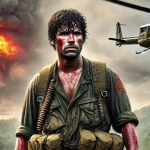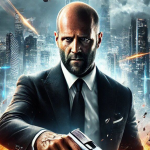rambo: A mordern icon of action cinema

In the pantheon of action heroes, few names resonate as powerfully as Rambo. First introduced to audiences in 1982’s “First Blood,” John Rambo, portrayed by Sylvester Stallone, quickly became a symbol of unyielding determination and raw combat prowess.
The franchise continued to captivate audiences with subsequent films like “Rambo: First Blood Part II” (1985), “Rambo III” (1988), and finally “Rambo” (2008). Each installment delved deeper into Rambo’s complex character, blending adrenaline-pumping action with poignant reflections on war, trauma, and personal redemption.
The appeal of Rambo lies not just in his ability to outmaneuver and outgun adversaries but also in his moral code and sense of justice. He embodies the archetype of the reluctant hero pushed to his limits, defending the oppressed and seeking vengeance against those who wrong him.
Stallone’s portrayal of Rambo has evolved over the decades, reflecting changing attitudes towards war and heroism. From a troubled Vietnam War veteran in “First Blood” to a seasoned warrior battling in the jungles of Burma in “Rambo,” each film adds layers to Rambo’s character, making him more than just a one-dimensional action figure.
Beyond the action sequences and explosive set pieces, “Rambo” movies explore themes of survival, sacrifice, and the psychological toll of combat. They depict Rambo not just as a fighter but as a survivor grappling with his own demons and haunted by the horrors he has witnessed and endured.
In an era dominated by CGI spectacle, the enduring appeal of Rambo lies in its gritty realism and Stallone’s commitment to portraying a flawed yet undeniably heroic figure. The character continues to resonate with audiences worldwide, cementing his status as a timeless icon of action cinema.
As the legacy of John Rambo endures, so too does his impact on popular culture, reminding us of the enduring power of the human spirit in the face of adversity.











